03 Apr Cosmetic Regulation: Restrictions on certain Nanomaterials
cosmetic regulation nanomaterials: Navigating the Prohibition and Restriction of certain ingredients
On 15th March 2024, the Official Journal of the European Union published Commission Regulation (EU) 2024/858 on the Cosmetics Regulation to prohibit and restrict the use of certain nanomaterials.
Nanotechnology is one of the most innovative areas in the cosmetic industry. By working at the nano scale, cosmetic scientists can improve the texture, absorption, and stability of products, offering consumers more effective and pleasant experiences.
However, the European Union (EU) has some of the strictest regulations in the world regarding nanomaterials. To protect consumer health and ensure transparency, certain nanomaterials are restricted or completely prohibited under the EU Cosmetics Regulation (EC) No 1223/2009.
For cosmetic brands and marketers, understanding these regulations is essential to ensure compliance, build trust, and successfully position products in the European market.
Source: Regulation – EU – 2024/858 – EN – EUR-Lex (europa.eu)
What Are the Newly Prohibited Nanomaterials?
The following nanomaterials, previously used in cosmetic formulations, are now banned in the EU. This change requires manufacturers to reformulate products that contain them:
- Styrene / Acrylates copolymer (nano), CAS no 9010-92-8
- Sodium Styrene / Acrylates copolymer (nano), CAS no 9010-92-8
- Copper (nano), CAS no 7440-50-8
- Colloidal Copper (nano), CAS no 7440-50-8
- Colloidal Silver (nano), CAS no 7440-22-4
- Gold (nano), CAS no 7440-57-5
- Colloidal Gold (nano), CAS no 7440-57-5
- Gold Thioethylamino Hyaluronic Acid (nano), CAS no 1360157-34-1
- Acetyl Thioethylamino-9 Colloidal Gold (nano)
- Platinum (nano), CAS no 7440-06-4
- Colloidal Platinum (nano), CAS no 7440-06-4
Acetyl tetrapeptide-17 Colloidal Platinum (nano)
These nanomaterials, previously used in cosmetic products, are now subject to specific bans. This change will have a significant impact on product formulation and will require adaptation by manufacturers to comply with the new EU regulations.
Which Nanomaterials Are Now Restricted?
Alongside the prohibitions, new restrictions apply to Hydroxyapatite (nano) (CAS No 1306-06-5):
- Maximum concentration: 10% in toothpastes
- Maximum concentration: 0.465% in mouthwashes
Products exceeding these limits cannot be placed on the EU market.
Timeline for Enforcement
The regulation sets clear deadlines for adaptation by the cosmetics industry:
- 4 April 2024 → Regulation enters into force.
- 1 February 2025 → Products containing prohibited or non-compliant nanomaterials can no longer be placed on the market.
- 1 November 2025 → Complete ban: any non-compliant products must be withdrawn from sale.
This transition period allows manufacturers and brands time to reformulate, re-label, and adapt their compliance strategies.
What This Means for the Cosmetics Industry
REFORMULATION CHALLENGES
Brands must reformulate products containing the prohibited nanomaterials while ensuring safety, efficacy, and consumer appeal.
Compliance and Documentation
Every product must be updated in the Cosmetic Products Notification Portal (CPNP) with revised formulations and safety assessments.
Marketing Transparency
Marketers must avoid highlighting banned ingredients and ensure claims remain compliant with EU cosmetic regulation.
FAQs – Nanomaterials Regulation in EU Cosmetics
Why are these nanomaterials being banned?
The European Commission acted based on SCCS (Scientific Committee on Consumer Safety) opinions that raised safety concerns.
Are all nanomaterials banned?
No. Some are permitted under strict conditions (e.g., titanium dioxide, zinc oxide), while others are now restricted or prohibited.
What should manufacturers do now?
Begin reformulating affected products, notify new formulations via the CPNP, and prepare updated labeling for compliance.
Will this affect products already on shelves?
Yes. From 1 February 2025, non-compliant products can no longer be marketed, and by 1 November 2025, they must be completely withdrawn.
Conclusion
This update to the EU Cosmetics Regulation marks an important step in consumer safety and transparency. The prohibition of certain nanomaterials and the restriction of others will drive significant changes in formulation, compliance processes, and marketing.
For brands and manufacturers, adapting quickly to these requirements is key to maintaining consumer trust and regulatory compliance in the European market.
The Regulatory Area at Cosmewax ensures that every product developed and manufactured by the company is safe, compliant with all relevant regulations, and ready for global marketing. Its work begins at the earliest stages of development, advising on ingredient restrictions, safety standards, and labeling requirements in each region. The team is also responsible for preparing product information files, managing registrations, and staying up-to-date with the constant changes in cosmetic legislation across international markets. Thanks to this proactive approach, Cosmewax not only guarantees that its products meet all legal obligations but also provides clients with confidence, transparency, and the assurance of a reliable partner in global cosmetic compliance.
You can contact us via the form below if you need your products to comply with the new regulations:


Sorry, the comment form is closed at this time.